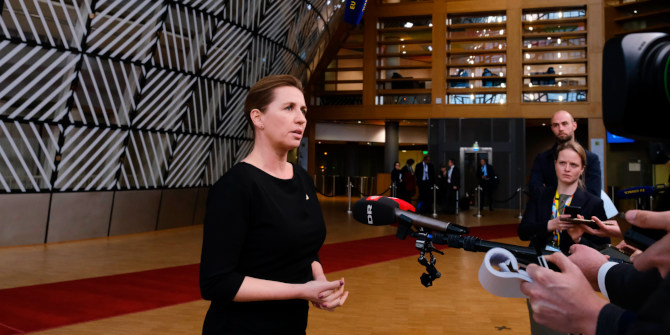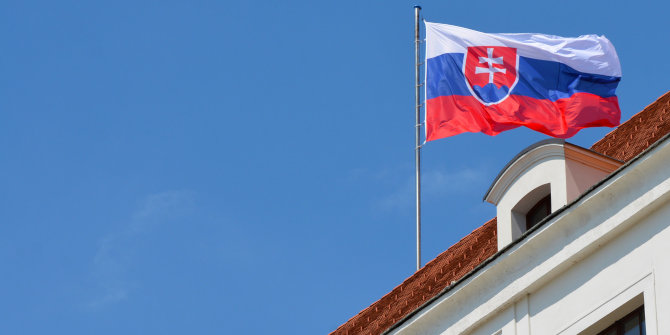States in the European Union cooperate in several joint naval operations across the world. Sebastian Bruns assesses the case for the EU developing its own standing navy.
The Red Sea off the coast of Yemen, on one spring morning in mid-March 2024: a German Navy helicopter embarked on the guided-missile frigate “Hessen” lifts off from the aft deck, quickly gains altitude and soon thereafter identifies, hails and subsequently fires on a group of towed uncrewed surface vessels operated by Houthi rebels. The drones were destroyed – and the Houthi’s capabilities to threaten international trade in one of the key maritime choke points of the world have been curtailed, as least for another day.
It is important to note that navies are both a military and a political tool. Their inherent flexibility, manoeuvrability, scalability and the global maritime geographic and legal framework make them a prime tool for policymakers to exert influence without putting boots on the ground somewhere. Warships can be a very useful way for “diplomacy in dress whites”, confidence-building measures ashore and at sea and cooperative security.
They can also respond to crisis, deter, and strike enemy ships or territory if and when so directed. The warship that hosts a cocktail reception in a friendly port one week might find itself enforcing embargos or protecting commercial shipping from drones and anti-ship missiles a few days later. In other words, navies can quickly move from “good-boat diplomacy” to “gun-boat diplomacy”. Policymakers like that kind of Swiss Army knife opportunity.
Europe’s maritime turn
The “Hessen” and her embarked Mk-88 Sea Lynx helicopters are in the area as part of EU Operation “Aspides”, the latest in a series of European Union naval missions that included counter-piracy missions off Somalia (EU NAVFOR Atalanta), countering forced and illegal maritime migration in the central Mediterranean (EU NAVFOR Sophia), and embargo-control in the same region (EU NAVFOR Irini).
“Aspides” is designed to protect commercial shipping through the Bab el-Mandeb, and its robust EU mandate as well as the threat environment make for a unique and dangerous mission-set. Just last year, Germany’s “gold standard” frigate was on a six-month deployment as part of NATO’s Very High Readiness Joint Task Force (VJTF) Maritime tour on the northern flank.
The Sachsen-class frigate’s recent deployments under two politically different but operationally demanding mandates are illuminating. Since 2008, the year which saw the EU’s first naval flotilla in action off Somali waters (in which “Hessen” was also active 2013-2014), the European Union has taken a maritime turn in its defence and security policy.
It capitalised on a rise of maritime security problems such as organised crime at sea, threats to freedom of navigation and what navalists consider low-level or medium-intensity operations. Not fielding a navy of its own but utilising member states’ grey hulls instead, warships that were once designed for anti-submarine operations, aerial warfare, shelling enemy coasts or engaging the others’ warships in battle now found themselves on much different missions. Navies can do these, but that is not what they are usually built for.
Meanwhile, in the absence of an existential military threat, NATO found itself bogged down in a costly counterterrorism and counterinsurgency campaign in Afghanistan. Concurrently, for some NATO members, the European Union’s attractiveness as a hub for attaining foreign policy goals increased (NATO and the EU have 24 member states in common).
There is a varying degree of “alliance mentality” in all of their navies, meaning that countries generally decide opportunistically whether they assign forces to NATO, the EU, under some form of coalition of the willing, or under a national mandate. In some cases, the European Union’s more civilian-minded nature might be a forum to pursue, in other instances NATO’s military and political power (to include the transatlantic partners) will be more appealing.
“I’ll take an extra serving of seapower, but hold the duplication”
With the return of Russia as a challenger to European security and transatlantic integrity since 2014 and more so since 2022, NATO has revitalised its role just in time for its 75th anniversary. At the same time, Donald Trump has indicated that he might be willing to lead his country out of the alliance if and when elected.
Simultaneously, European member states are reeling from downsizing their navies significantly since the 1990s. It is a truism that a warship or a naval aircraft can only be at one place at any one time. Likewise, it can only be a part of a NATO task force or an EU operation at any given time, but not both.
It might be appealing to European visionaries to consider an EU or European navy to hedge against any threats to NATO’s cohesion. If recent European decision-making and the history of such monumental plans are any guide, there should be a bottom-up rather than top-down approach. That is, take existing assets and coordinate them properly for them to grow into something larger if, and only then, mandated.
The problem not to duplicate remains one of the central and delicate subjects. It must be assumed that high-end naval challenges are back to stay given Russian and Chinese activities on the near and far seas. Importantly, and different from previous eras, medium-intensity maritime operations against maritime terrorists, pirates or other spoilers of the international liberal maritime system will continue to be in demand.
Hence, any European Navy should assume a stronger coordination function with existing material first before considering whether to grow through the low- and medium-intensity spectrum into a true naval force. For instance, the EU (or a coalition of the willing) could start coordinating its auxiliary ships as well as selected governmental vessels. A standard set of procedures (ideally NATO ones) that European coast guards’ assets or Frontex ships could “plug and play” into would consolidate the force into perhaps not a US-style 1,000-ship navy, but a versatile and capable 100-boats flotilla. It should be assumed that national caveats will remain in even such a modest force.
Overcoming these and organising the EU groups as a group not unlike the NATO’s standing flotillas (the Alliance operates four of these) would also allow for cooperation at sea and, if circumstances warrant, quickly transfer from one mandate to another. Europe should utilise its significant intellectual and industry capital (PESCO, the EU’s Permanent Structured Cooperation comes to mind).
Under the framework of a Standing Naval Force EU, the EU could purposefully focus on jointly building and operating programmes for offshore patrol vessels, uncrewed systems for maritime domain awareness, civilian-crewed hospital ships to help in natural disasters as well as provide humanitarian assistance (thus complementing efforts by the Chinese navy in Africa, for instance), and help in capacity building in the Black Sea and Mediterranean theatres.
Another naval truism is that warships are not built for “low-end operations”, stating that the mantra is “warfighting first”. The U.S. Littoral Combat Ship or the German F-125 Baden-Württemberg-class “stabilisation frigates” serve as warnings about the dilemma of significant capital investment in naval procurements. However, the EU is an actor unlike the ones that seapower theory and practice have seen. The seas are wide, and lots of work lies ahead, all without the more or less convenient planning space of a decade or more. The EU could really go a long way without formally establishing its own navy, utilising the forces they have, not the wants they would want.
Note: This article gives the views of the author, not the position of EUROPP – European Politics and Policy or the London School of Economics. Featured image credit: Gimas / Shutterstock.com





